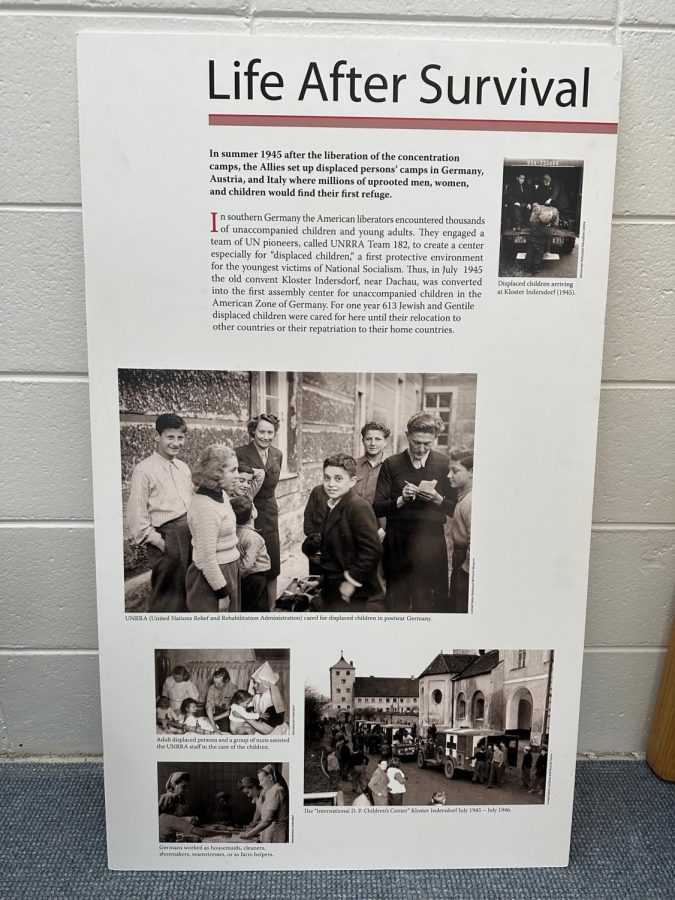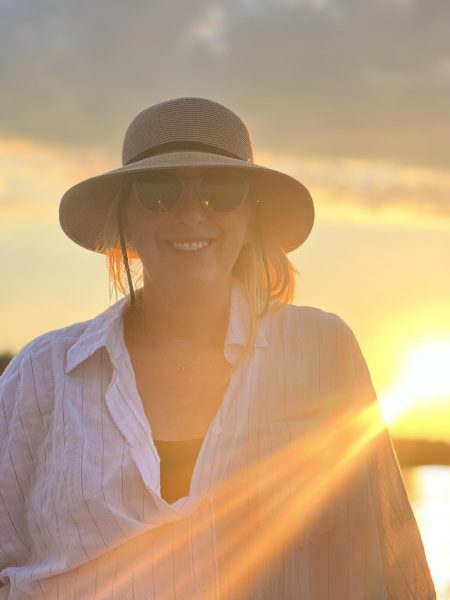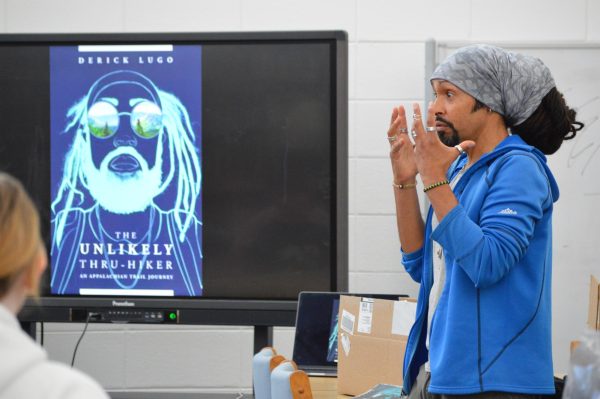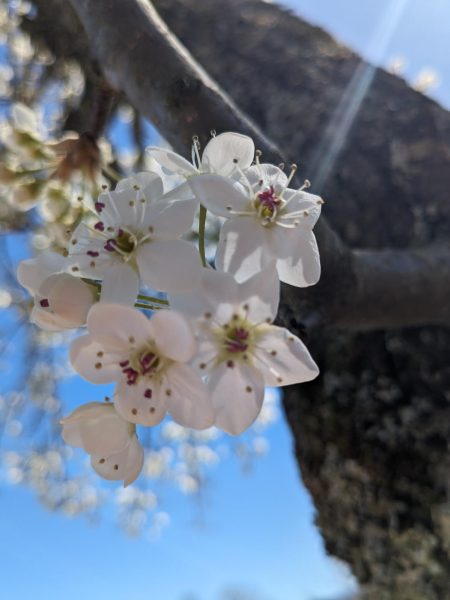Life After Survival
Sophomore Lauren Gottlieb offers an overview of the N.C. Council on the Holocaust traveling museum exhibit which recently visited HHS.
The first panel of the traveling exhibit gives an overview of the displaced persons’ camp which offered help to children after WWII.
March 21, 2023
Often, the world turns a blind eye to the survivors of the Holocaust. Due to the abundant information surrounding the Holocaust and lack of time, teachers cannot expand on all the details. As a result, they tend to focus on the events that occurred before the war ended. We notice the violence brought on by concentration camps and other anti-semitic practices. We are aware of that bold “Six Million Jews Murdered,” written across most information regarding this horrific event. We see photos and videos of weeping children, women, and men. However, we miss the accounts of those that escaped. What happened to those that did not perish?
The North Carolina Council on the Holocaust works to change this narrative. HHS English II teacher, Mrs. Beck recently requested to display one of the Council’s traveling exhibits, Life After Survival, in our high school media center on March 13, 2023. This specific exhibit is sponsored by Jack and Rosemarie Stein in memory of Morris Stein, a Holocaust survivor. I absorbed the compelling narrative of a group, the United Nations Relief and Rehabilitation Administration (UNRRA). In only one year of existence, connections formed between survivors in the Kloster Indersdorf, a center made by UNRRA for Holocaust survivors that did not have a home or life to revisit. Mrs. Chastain, the English I and III teacher at Hayesville High School, recommended this exhibit to students and teachers by saying, “…it provides an in-house opportunity to extend our understanding of how the United Nations Relief and Rehabilitation Administration (UNRRA) provided critical care and assistance to children who survived the Holocaust.”
Greta Fischer, a social worker at the center, specifically worked to welcome these children as individuals and determine how to meet the children’s needs best. To help these kids persevere through times of trouble, the workers alleviated physical, mental, and social concerns as much as possible. Eli Vetten, an English II student at Hayesville High, reflected on the hospitality he learned about, stating, “They gave them clothes that were good, not some messed up rags… made them feel wanted and told them their lives had meaning.” Attempting to set a good example, the staff encouraged the kids in many behavioral aspects; the prompting ranged from not acting out in hatred towards Germans to initiating proper meal etiquette.

The fourteenth and final panel displays many photos of child survivors in October 1945 that resided in the Kloster Indersdorf. Children of all ages show what one might think is impossible after the tragedies faced, a smile. History transformed through a compassionate group, the UNRRA. Without their tender support, care, and call to action, 613 Jewish and Gentile children, once displaced, might have continued without a family. If you wish to learn more about this eye-opening exhibit, I encourage you to visit the N.C. Council on the Holocaust website for further information regarding the offered Holocaust exhibits, teacher resources, scheduling, and more.












Susan Gottlieb • Mar 21, 2023 at 9:07 pm
What a great article about the surviving children of the Holocaust. Well written Lauren